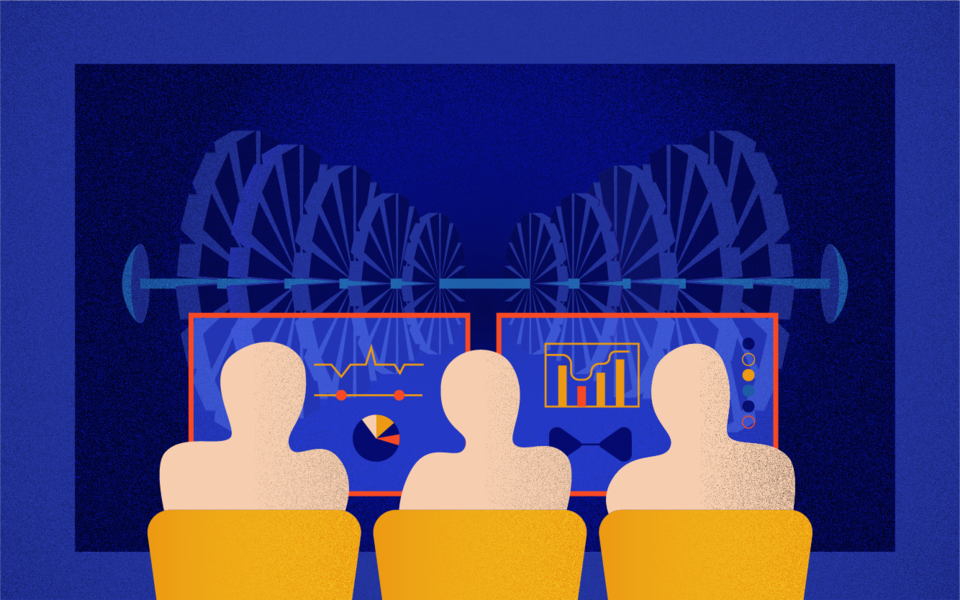Taking Measure
Just a Standard Blog
50 Years of the ‘Journal of Physical and Chemical Reference Data’: A Q&A With Editors Allan Harvey and Don Burgess

Reference data’s connection to the public is indirect yet often very important. For example, a town’s electricity could come from a steam power plant in which reference data for the properties of steam was used to design the turbines. In this way, reference data provides important foundations to science and technology.
This year marks the 50th volume of the Journal of Physical and Chemical Reference Data (known as JPCRD to its editors and readers). The journal was first published in 1972 to, in the words of inaugural editor David Lide, “present, in a systematic manner, compilations of physical and chemical property data which have been critically evaluated by scientists who are knowledgeable in the pertinent field of research.” With thousands of articles and tens of thousands of citations, the journal is a respected repository for data. We asked present editors Allan Harvey and Don Burgess about the journal, its significance and their plans for the future.
When did you become editors of the Journal of Physical and Chemical Reference Data? How did you get recruited for the job?
We started in late 2007, replacing Malcolm Chase, who was the director of Standard Reference Data at the National Institute of Standards and Technology (NIST) for many years. Don volunteered upon learning about the opening because of his interest in reference data. Allan was recruited by his division chief, Dan Friend, because of the significant overlap between the journal’s topics and the work of what was then NIST’s Thermophysical Properties Division.
Why is NIST the natural home for a “reference data” journal?
Reference data is expert judgment of the “best” values (and their uncertainties) for significant data, so that the data will be useful to scientists and engineers. The Standard Reference Data Act gives NIST primary responsibility in the U.S. for disseminating reference data, and NIST has from its beginning been the leader in supplying and evaluating such data.
How did researchers typically access scientific reference data before the journal was introduced?
Some reference data was published in reports from what was then the NBS National Standard Reference Data System (NSRDS), but these volumes were not widely circulated or publicized. Other such work was published in individual papers scattered in various journals. Of course, many people looking for reference data look in handbooks, such as the CRC Handbook of Chemistry and Physics, but often the origin and uncertainty (the “error bars” associated with any measurement) of numbers in handbooks are not documented. It is now common to see handbooks cite one of our journal’s articles as the source for some of their tabulated information.
We think of ourselves as a source for people who are using these data in their work and need to understand where the data come from and how much confidence to put in them. For example, if you are modeling the climate, you want to know not only the wavelengths and strengths of how carbon dioxide and water absorb energy, but also the uncertainties in those quantities so you can estimate how certain or uncertain your results are.
How did the internet and personal computers change the journal?
Of course, the mechanics of article submission, peer review and publication have been revolutionized by these changes. We no longer need to physically mail manuscripts around the world. Perhaps more significant, the scope of databases has expanded beyond mere printed tables to include data in electronic formats and databases maintained on the web. Now, many of our papers document electronic databases rather than providing lengthy static tables.
What kinds of data are in the journal now that you wouldn’t have imagined when you became editors?
We have seen some areas diminish due to lack of new work, and an increase in other areas of current interest such as temperature and pressure measurements connected to the new International System of Units (SI). The use of quantum chemical methods that compute molecular properties from first principles to aid in reference data evaluations has really blossomed in recent years. We have also decided to publish selected experimental data papers, which we did not envision when we started. These are for studies reporting experiments yielding data that provide a definitive reference that is useful outside its immediate context, such as a standard for calibration.
For example, a highly accurate measurement of the heat of combustion of methane is used to calibrate instruments that determine the energy content of natural gas, and that piece of data also feeds into models used by the gas industry to estimate energy content of different natural gases.
If you had a hope or dream for what the journal will be 50 years from now, what would it be?
Fifty years is a long time these days! We would hope the journal would become the destination of choice for critical data evaluation work and reference data in all areas of physical and chemical science; currently there are some fields where we do not have a foothold, such as materials science and atmospheric science. We envision a more interactive journal, where data would be available in a conveniently usable form at the click of a mouse (or whatever might have replaced the mouse by then).
Read more in Allan and Don’s article, “Fifty Years of Reference Data,” in the Journal of Physical and Chemical Reference Data.




